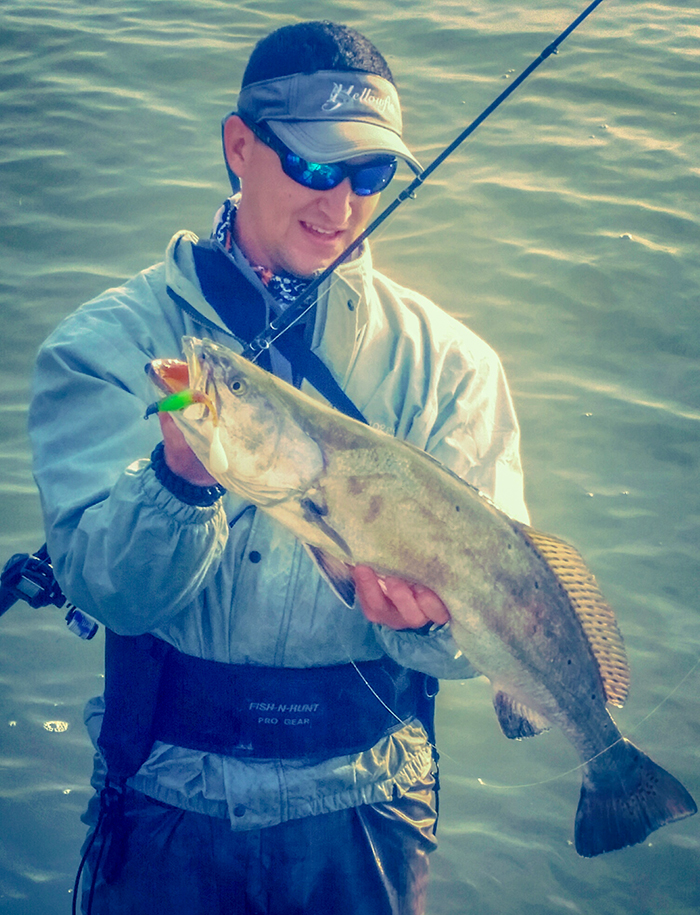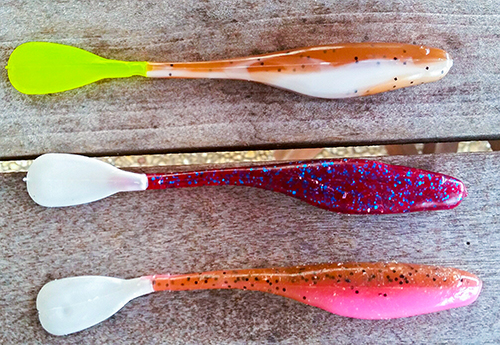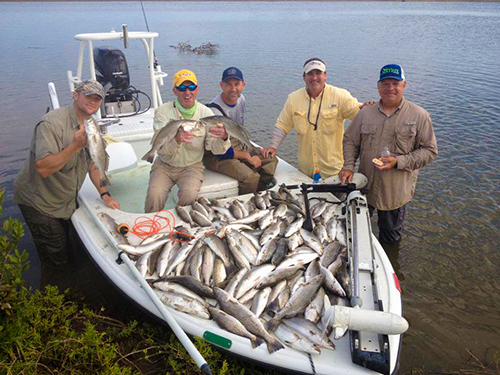Fishing speckled trout across the Gulf Coast has shown me how important this one thing is.
Being Sicilian and from the greater New Orleans area it was tradition for the Bush family to eat spaghetti and fried chicken every Sunday for dinner.
Each weekend, before 10 o’clock mass, my mom would combine the ingredients into the same large stainless pot like she had done so many times since her days growing up on Phosphor Avenue in Metairie.

This speckled trout weighed nine pounds and was released to fight another day. Chris Bush has caught trout heavier than this one!
As you would imagine, through decades of repetition, her consistency in the recipe developed, and so did her confidence.
So how does your mom’s spaghetti and fried chicken translate to me catching more fish?
It’s simple
Consistently fishing a lure creates confidence in it. It’s something I like to call, since we’re talking about food, my bread and butter.
My bread and butter technique for producing trout is fishing a jig.
Like my mom, in her childhood, sitting on a stool in her mother’s kitchen learning the intricacies of my grandmother’s recipe, I had a front row seat, or a back deck view, to one of the best jig angler in South Louisiana, my dad.
For almost 25 years, I’ve learned the ins and outs of how to fish a variety of water columns (shallow or deep) in a variety of locations (beaches to bridges) with anything soft plastic.
From the early days of double rigging chartreuse H&H Sparkle Beetles in the surf outside of Empire, Louisiana to targeting trophy trout wading the Texas flats with a 6” Gambler Flap’n Shad, the mindset I’ve developed is that as long as I have a minnow imitation soft plastic on the end of my line, I have the confidence that if trout are present, I can catch them.

Because I fish with it often, I am confident with the Gambler Flap'n Shad
In addition to knowing how to fish a jig, I tailor my baits versatility to the water column I want to target. This can be done in a variety of ways.
For smaller soft plastics like a Matrix Shad, this can be done through jig head selection and profile.
Depending on the targeted water column and a fish’s relation to it (on the bottom, suspended or high) I choose the right jig head weight to maximize my baits time in the strike zone.
Although basic in concept, it’s often overlooked.
For larger soft plastics like a Gambler Flap’n Shad or 5” Zoom Super Flukes, these baits can double as top waters or slow sink style baits, similar to Corky’s or MirrOdine’s.
This can be achieved by threading a simple 3/0 VMC Wide Gap hook rigged weightless (topwater application) or threaded on a 1/16 or 1/8oz jig head for that slow sink effect.
These techniques typically don’t produce as many bites as your standard 1/4oz or 3/8oz threaded on a Matrix Shad, but will certainly produce bigger strikes, if you have the patience to fish for larger trout.
That said the concept still remains, as long as fish are present, maximizing my bait's time in the strike zone triggers bites, albeit from larger trout.

Being confident with their lure selection, because of consistent use on the water, led to this great haul of speckled trout.
So maybe jig fishing isn’t your bread and butter, that’s ok.
The point here is you should use the technique you’ve developed over the course of time spent on the water.
The more you use something the more confident you become with it over time.
That said I urge you to reflect on whether you’ve tapped into the full capability of that techniques’ potential.
I’ll be the first to attest that I’m not the best Topwater, Corky or Catch 2000 angler, although they have produced their fair share of trout over the years.
However, give me a box full of jigs and I will leave no bite behind.
If jigheads and soft plastics work this well for me and other anglers, then chances are they will work for you as well.
Tie one on and start fishing with it so you can get the feel for casting and retrieving one and learn the finer details of achieving success with them.
Much like my mom producing Sunday dinner, the confidence I’ve developed of applying a jig has consistently produced trout over the years.
Through consistency comes confidence.
So I urge you the next time you launch the boat, fish your bread and butter and ignite the bite, but be prepared to do it with more consistency.
Tight Lines and God Bless!
